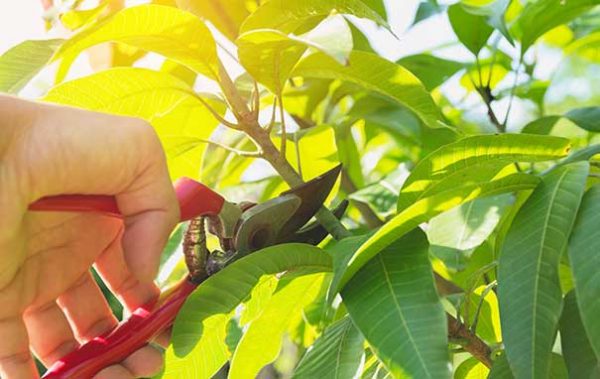
Pruning is one of those garden chores that if done right can pay dividends for the entire season. Good pruning and maintenance of your landscape trees and shrubs helps them grow strong and healthy during their growing season, while allowing air and light to circulate through the plant. Despite the benefits of pruning, a little knowledge does go a long way. Certain types of plants should only be pruned at certain times of the year, while others respond to light or heavy pruning. Our list below will hopefully shed some light on some of the mysteries of pruning so that you can get the most gain out of your work.
When To Prune
Needled Evergreen Plants are best pruned in the spring just before or during their period of strong growth. This includes:
- Hemlocks
- Yews
- Arborvitae
- Cypress
- Pine
- Spruce
- Junipers
Special Note: In the spring, spruce and pine trees produce “candle-growth” on which the new needles sprout. Pruning is best done when this growth is at about half of its normal length.
Early Spring-Blooming Plants set their flower buds in July/August. To prune them after this time is to cut off next year’s flowers. They are best pruned just after they bloom as they have just put out their new growth. These plants include:
- Azaleas
- Rhododendron
- Saucer Magnolia
- Forsythia
Summer Flowering Plants are best pruned in late winter to stimulate optimal growth which will result in a great flower show. These plants include:
- Roses
- Crape Myrtle
- Hydrangea
- Althea
Some Trees tend to “bleed” if they are pruned in late winter. While this is actually harmless, you may want to wait until early fall to avoid this situation. These trees include:
- Maples
- Birch
- Beech
Pruning For Winter Damage
If you have a lot of damage from the snow and ice, here are some helpful tips on minimizing the damage.
How To Prune
- Use pruning shears or saw. Dull tools leave sloppy scars that can be an invitation for insect damage. Choose the desired bud direction; the bud placement determines the direction the new growth will be.
- Small branches are easily removed with pruning or loping shears. The thin cutting blade should be positioned in the trunk side of the cut to make as flush as possible.
- Large limbs may be removed with either a two or three cut method. Make sure not to leave a stub, or to leave a scar. A clean, fresh cut will readily heal. A pruning sealer may be used if a scar is left.
- Hedges are best developed so that they are wider at the base than at the top. Such a shape allows light penetration to the lower branches resulting in a full looking hedge all the way to the ground. Fewer diseases are also likely.
Get Help From Our Landscaping Experts
Meadows Farms landscaping team offers expert tree and shrub care including pruning services. With over 60 years in business our team is happily serving residents in Virginia, West Virgina, Maryland, and the Washington D.C. Metro Area.

